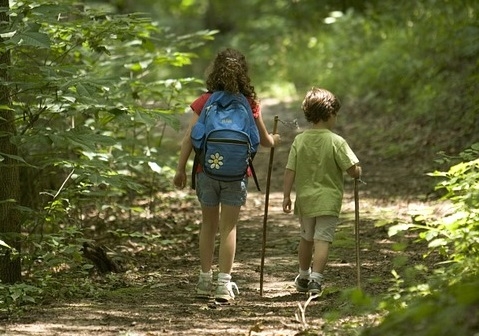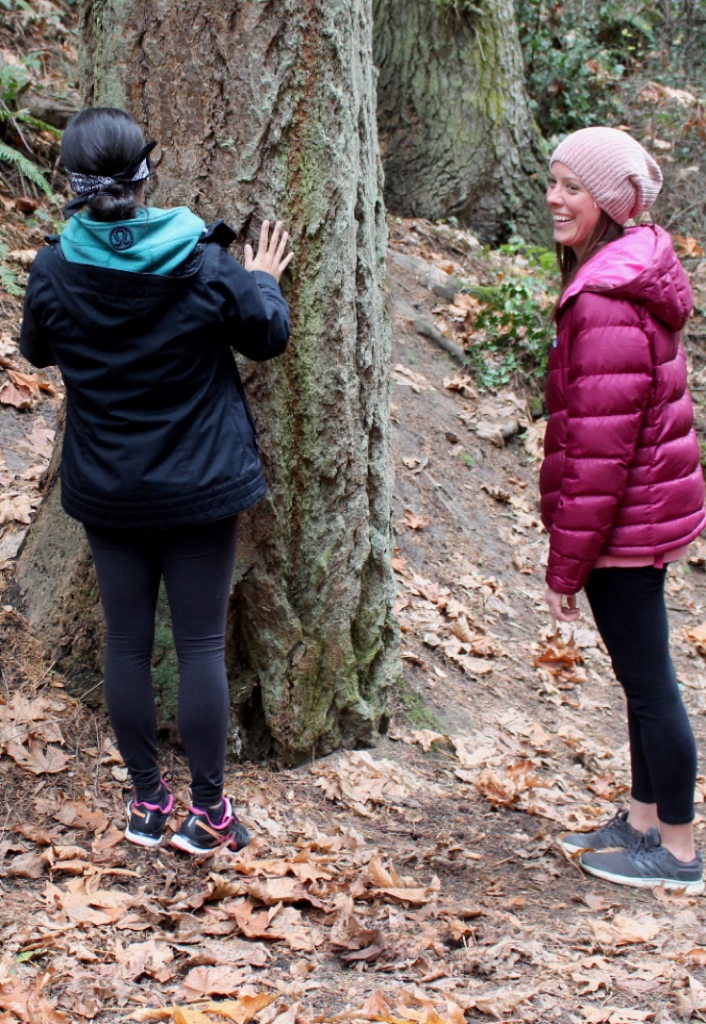Nature-Based Physical Activity in Physical and Health Education

Nature-Based Physical Activity in Physical and Health Education
In Journalist Richard Louv’s book, Last Child in the Woods, Louv underscores the potential harm to children caused by a lack of exposure to the natural world. This includes the rise in obesity, attention disorders, and depression (Louv, 2005). In fact, he suggests that youth today are actually “alienated” from nature and coined the term ‘nature deficit disorder’.
While simply being in nature can connect young people to the natural world and improve overall health, being active in nature can further enhance wellbeing by providing a positive emotional setting that can motivate or “hook” people into healthy physical activity (Flett, Moore, Pfeiffer, Belonga, & Navarre, 2010).
Time spent being active in the outdoors helps young people achieve a plethora of physical, mental and social health outcomes in addition to physical activity such as improved self-confidence, leadership ability, social skills, motivation, academic attainment, mental health, and resilience (Fiskum & Jacobsen, 2013; Harun, 2014; Mutz & Muller, 2016; Rickinson et al., 2004).
During a time of wide-scale obesity and detachment from nature, a strategy is needed to get our young people moving out in the fresh air.
One possible way to achieve some of the above mentioned outcomes is to incorporate nature-based physical activity in Physical and Health Education (PHE). School PHE is well positioned to enhance young people’s health outcomes; it is mandatory for most students and is offered regularly, if not daily. Research in outdoor education has long heralded the positive outcomes of learning in nature, but due to its large scope, it is not widely practiced in PHE. Although related, outdoor education is considered a discrete discipline separate from PHE (Martin & McCullagh, 2011). Outdoor education often involves multi-day trips which are simply not feasible in regular PHE. Therefore, nature-based physical activity offers a more accessible approach to outdoor learning in PHE. Nature-based physical activity refers to physical activities that are done in natural areas, require little specialized equipment, can be participated in by the majority of youth, are cost-efficient and can be implemented by PHE teachers on a regular basis.
Provided below is a sample nature-based physical activity. It can be modified for most middle and high school PHE programs and it requires little travel and can even be taught in a green space on school grounds. My Tree requires little to no equipment, fosters a connection with nature by using one’s senses, is easy to implement, and is a favourite among students.

My Tree
In partners, one of the pair leads the other to a selected tree (taking a meandering route). Ideally, participants should walk at least 65 feet. Guides lead their unsighted partners (blindfolded or eyes shut) slowly and carefully, warning them of obstacles. Once at the selected tree, the guide places their partner’s hands on the tree in order to explore it. Unsighted partners may touch the tree, hug it, or use any other tactic they choose while keeping their blindfold on or their eyes closed. After the exploration, guides take their partners back to the start point, following a roundabout route to make it more challenging. Once back, unsighted partners regain their sight and try to find their special tree. When the tree is found (or time is up), switch roles.
Inclusion of nature-based physical activities in PHE - venturing beyond the school’s physical building into nature - can be a source of social, ecological, emotional, and physical wellness for students. To learn more about nature-based physical activity, including sample activities to include in PHE, check out these resources:
Cornell, J. (2015). Sharing nature: Nature awareness activities for all ages. Nevada City, California: Crystal City Publishers.
Gruno, J, & Gibbons, S. (2019, in press). Incorporating nature based physical activity in physical and health education. The Journal of Physical Education, Recreation & Dance.
Houghton, P., & Worroll, J. (2016). Play the forest school way: Woodland games, crafts and skills for adventurous kids. United Kingdom: Watkins Publishing.
Monkman, D., & Rodenburg, J. (2016). The big book of nature activities. Gabriola Island, British Columbia, Canada: New Society Publishers.
Nguyen, N. (2015). Incorporating outdoor education into the physical education curriculum. Strategies, 28(1), 34–40. https://doi.org/10.1080/08924562.2015.981126
Walmsley, N., & Westall, D. (2018). Forest school adventure. Eat Sussex: Guild of Master Craftsmen Publications.
References
Fiskum, T. A., & Jacobsen, K. (2013). Outdoor education gives fewer demands for action regulation and an increased variability of affordances. Journal of Adventure Education and Outdoor Learning, 13, 76–99.
Flett, R. M., Moore, R. W., Pfeiffer, K. A., Belonga, J., & Navarre, J. (2010). Connecting children and family with nature-based physical activity. American Journal of Health Education, 41(5), 292–300. http://doi.org/10.1080/19325037.2010.10599156
Harun, M. T. (2014). Promoting social skills through outdoor education and assessing its effects. Asian Social Science, 10(5), 71–78.
Louv, R. (2005). The last child in the woods: Saving children from nature-deficit disorder. Chapel Hill, NC: Algonquin.
Martin, P., & McCullagh, J. (2011). Physical education & outdoor education: Complementary but discrete disciplines. Asia-Pacific Journal of Health, Sport and Physical Education, 2(1), 67–78. https://doi.org/10.1080/18377122.2011.9730344
Mutz, M., & Muller, J. (2016). Mental health benefits of outdoor adventures: Results from two pilot studies. Journal of Adolescence, 49, 105–114. http://doi.org/10.1016/j.adolescence.2016.03.009
Rickinson, M., Dillon, J., Teamey, K., Morris, M., Choi, M., Sanders, D., & Benefield, P. (2004). A review of research on outdoor learning. Shrewsbury, UK: National Foundation for Educational Research and King’s College London.








